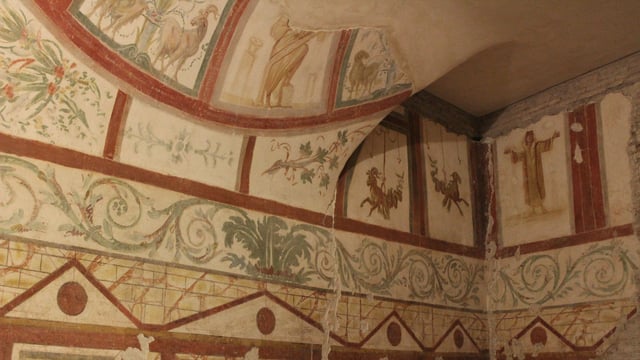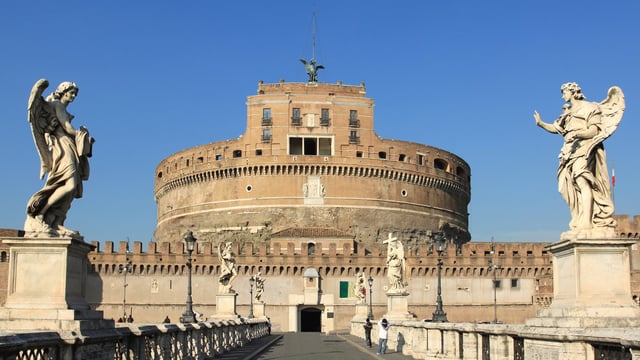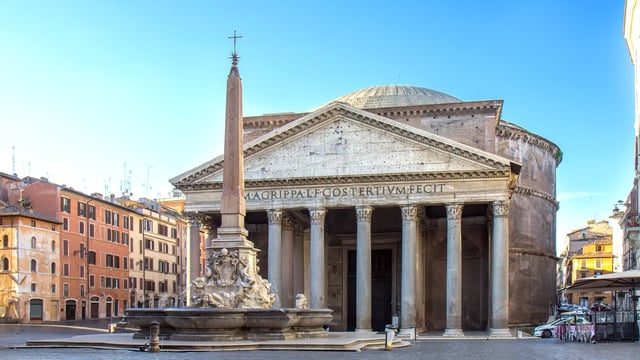Roman Sites & Landmarks in Rome & the Vatican
The city of Rome, widely recognised as the largest archaeological site in the world, is the showcase of the Roman World. The city’s Roman architecture has long been, and continues to be used in the present. Roman buildings have survived because their were turned into churches or monasteries, fortresses or palaces. Many other structures that were buried have been uncovered by archaeologists and leaders, and are visible today as ruins in the basements of buildings, in traffic roundabouts, on the sides of streets or left exposed in designated archaeological zones.
Roman Sites & Ruins in Rome & the Vatican
Aqua Virgo
Aqua Virgo was one of the eleven aqueducts that supplied the ancient city of Rome. It was completed in 19 BC during the reign of Emperor Augustus. The aqueduct was built by Augustus’s son in law, the statesman and architect Marcus Agrippa, to supply water to the first public bath house in Rome, also built by Agrippa. During the Renaissance the aqueduct was restored to supply water to the Trevi Fountain and the fountains on Piazza del Popolo. The travertine arches that can be seen at this locale marks one of a few spots where remains of the Roman aqueduct can be seen.

Arch of Janus
This massive, four-way arch built of marble is 16 metres high and 12 metres square. The north-west pier has a staircase that would have led to a series of rooms and chambers at the top. The enigmatic structure is built over an ancient drain that ran down the valley to the Tiber River. And is thought to have been a boundary marker rather than a triumphal arch. Also, dating the arch has not been simple. Remains of terracotta storage jars were found to have been used in the concrete vault, which are typical of jars used in the 4th century AD.


Baths of Caracalla
Built under Emperor Caracalla between 211 and 216 AD, these baths were the second of larger Imperial bath houses in Rome. And the sheer size of the baths still captivates visitors today. The bathhouse covered an area of 100,000 metres square and accommodated about 10,000 people. More of a leisure centre than a series of baths, these were the second to have a public library. The baths continued to be used until the 6th century. Now a popular archaeological attraction, the ruins are the summer home of the Rome Opera Company.

Case Romane del Celio
At the top of the Caelian Hill are the Case Romane del Celio, snapshots of early Roman history.Twenty rooms are preserved under a 4th century basilica, each with evidence for their former use over the years as homes, shops and even as a Christian shrine. Decorated with a unique mix of pagan and early Christian frescoes, these rooms give visitors a glimpse into ancient Roman homes and daily life, showing the changes that time and the rise of Christianity brought to the city.


Castel Sant'Angelo - Hadrian's Mausoleum
Castel Sant’Angelo is one of the most important historical sites in Rome. Now a museum, the structure was first built on an artificial mound on the northern banks of the Tiber River. It was built as a mausoleum for Emperor Hadrian and is wife Sabrina. In the early medieval period it was converted into a military fortress. Given its proximity to St Peter’s Basilica, in the 14th century it was converted into a residence for the Popes. The Vatican also used it as a prison. All of this history is on display to visitors , including the Papal chambers and their exquisite frescoes.


Circus Maximus
The site of the Circus Maximus is said to be the city’s oldest and largest public space. Evidence suggests it was founded sometime during the 6th century BC. By the end of the 1st century AD, it could accommodate an audience of over 250,000 people. Besides chariot races, other public spectacles including executions, gladiatorial contests and animal hunts were also staged here. The rounded, eastern end has recently been restored, and during summer months visitors cane experience the circus through an augmented reality experience.

Ludus Magnus
Adjacent to the Colosseum, and beneath street level, are the remains of the Ludus Magnus – what was the barracks and training arena for the gladiators that fought in the iconic Roman amphitheatre. The ruins were discovered in 1937 during building works, but only excavated at the end of the 1950s. The rest of the arena and what is thought to have been the armoury are still under the adjacent streets and buildings. The entire block has been left exposed and visitors can see just under half of the arena surrounded by barracks which housed the gladiators. When the Colosseum ceased to function this area was used for burials.

Marcellus Theatre
Within the ruins of the most important of Rome’s three theatres is a 16th century palazzo that is now subdivided into smaller apartments. The curving outer façade of the theatre is still obvious, as are other architectural features including the arcades. The theatre, which had a seating capacity of over 20,000 people, was started under Julius Caesar but finished for Augustus and inaugurated in either 13 or 11 BC. This theatre then became a model for further theatres built in Italy and the Western Roman Empire.

Mausoleum of Augustus
Augustus’s Mausoleum was one of the emperor’s first major building projects in Rome. Built in 28 BC, Augustus is said to have been inspired by the mausoleum of Alexander the Great in Alexandria, Egypt. Although this is the largest circular funerary monument in the world, it was left in a ruinous condition until restoration started in earnest in October 2016. Following extensive renovation, the site re-opened to the public on 1 March 2021 by the mayor of Rome. Since June 2022 it has been closed while the Piazza Augusto Imperatore is redeveloped.

Pantheon
One of the most popular attractions in Rome, the Pantheon was completed by Emperor Hadrian in 125 AD. The impressive dome ceiling of the rotunda was until 1958 the largest concrete span in the World. The reason for its remarkable preservation after nearly two thousand years is because the Roman temple was converted into a church in 608 AD. As impressive as the building is, its function is unknown – although most assume that it was a temple of one kind or another.













